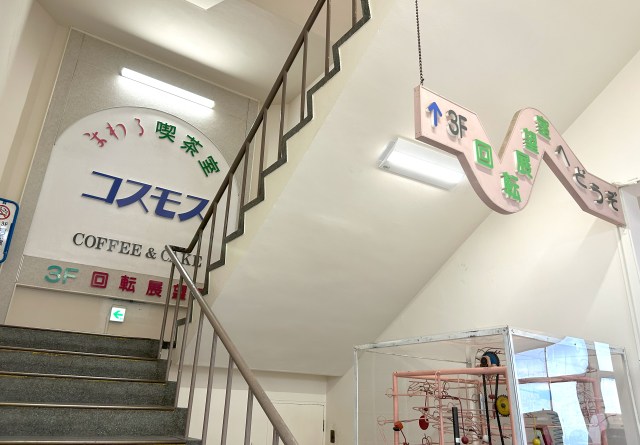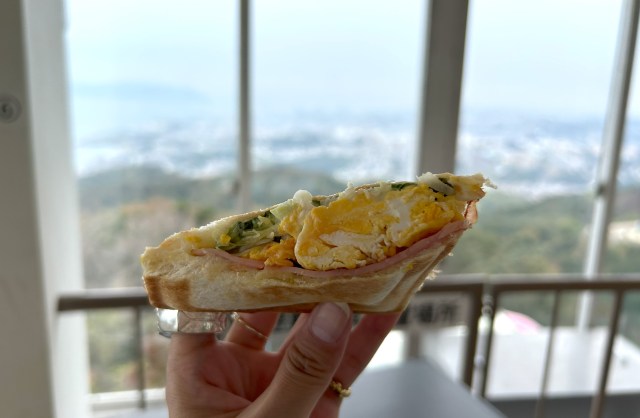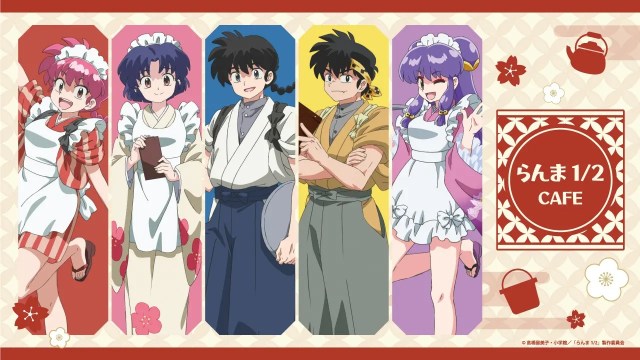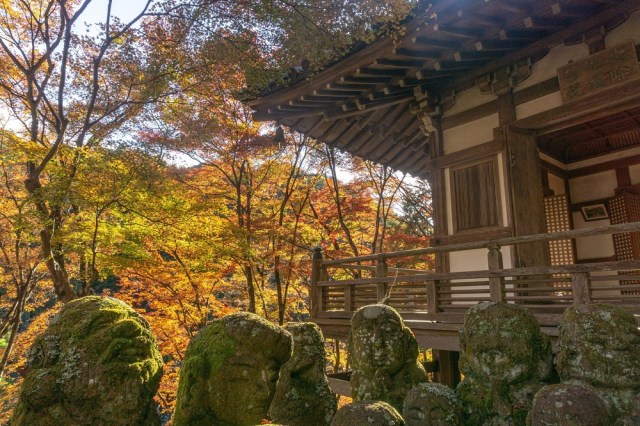A carlator is shaking things up on our way to one of Japan’s last revolving restaurants

A full-body dining experience like no other, complete with stunning, panoramic views.
Once upon a time, it wasn’t so hard to find revolving restaurants that perched atop the department store rooftops and towers of Japan’s skylines. They were an ultimate combination of quirky dining and spectacular views. Fast forward to today, and most have spun out of existence with less than ten left still turning. So, when fate brought our Japanese-language reporter K. Masami near one of these last spinning bastions of Showa-era charm, she couldn’t resist rolling in for a bite. However, she wasn’t prepared for the extra twist that was thrown her way on the journey to Cosmos in Kobe.
What started as a typical outing took an interesting turn when Masami alighted the train at Sumaurakoen Station. Right away, she was greeted by a ropeway ticket machine. In a mountainous country like Japan, ropeways are quite a common sight, but it was the mention of something far less ordinary that really threw her for a spin: a mysterious contraption known only as a “carlator”.

Intrigued, she picked up a round trip ticket for 1,200 yen (US$8) and ventured forth, gliding skyward on the ropeway towards the unknown.


Stepping out of the upper station, Masami’s eyes locked onto a peculiar system: a cross between a ski lift and an escalator, but with a solid floor. The name “carlator” suddenly made a lot of sense: a portmanteau of “car” and “escalator”.

Reassured by the floor’s stability—a comforting upgrade from dangling ski lifts—she climbed aboard, ready for a smooth ride. The operator instructed her to “hold on tightly” and, before she could process the advice, the carlator jolted into motion with a force better suited for launching rockets into orbit. As it rattled up the slope, her confidence in its stability was shaken, along with her seat and belongings. Clinging on tightly, she could only hope that nothing was jostled out of the car.

After a bumpy but strangely memorable ride, Masami arrived at the three-story building that housed Cosmos, where every floor radiated retro charm.

The first floor boasted a vintage jukebox (which she now deeply regrets not trying), the second floor featured a small arcade with nostalgic games, and the third floor was the main attraction: the revolving restaurant itself.

Unfamiliar with how revolving restaurants operate, Masami initially expected the rotation to pause so diners could hop on and off. However, as she watched it steadily spin, she quickly realized there was no need. At a leisurely pace of one full rotation every 55 minutes, Cosmos gives you plenty of time to sip, snack, and soak in the 360-degree views without feeling rushed.
▼ The outer ring with the tables and chairs rotates (回る); the counter does not (回らない)

Masami opted for a melon soda float (650 yen) and a hot sandwich (600 yen) from the central cashier before settling into her seat to watch the world roll by.


As the restaurant slowly rotated, offering ever-changing panoramic views, retro music played softly in the background, wrapping the experience in a cozy, luxurious tranquility.

With a delicious meal in her stomach and an almost full rotation, Masami returned her dishes and prepared for descent. Walking to the ropeway was, of course, an option, but the oddly therapeutic, full-body vibration of the carlator had got her addicted. With ticket in hand, she hopped aboard once more, shaking and rattling her way down the mountain like an enthusiastic human maraca.
Whether you’re a fan of quirky dining experiences or just curious to step back into a slice of Showa-era nostalgia, Cosmos is a must-visit. While it’s not the only rotating restaurant still standing, many others have stopped spinning, making this spot a rare gem. Although a few have recently resumed their rotations, the trend toward converting city rooftops into green spaces means revolving restaurants, as well as rooftop amusement parks, are unlikely to see a comeback anytime soon. So, if you’re in the area, don’t miss your chance to experience this one-of-a-kind dining adventure.
Cafe information
Kissa Cosmos / 喫茶コスモス
Address: Hyogo-ken, Kobe-shi, Suma-ku, Ichinomiya-cho, 5-chome, 3-ban, 2-go
兵庫県神戸市須磨区一ノ谷町5丁目3番2号
Open 10:10 a.m.-4:30 p.m. (last order 3:30 p.m.)
Closed Tuesdays
Website
Photos ©SoraNews24
● Want to hear about SoraNews24’s latest articles as soon as they’re published? Follow us on Facebook and Twitter!
Credit:



















 Image:
Image: 




























0 comments: